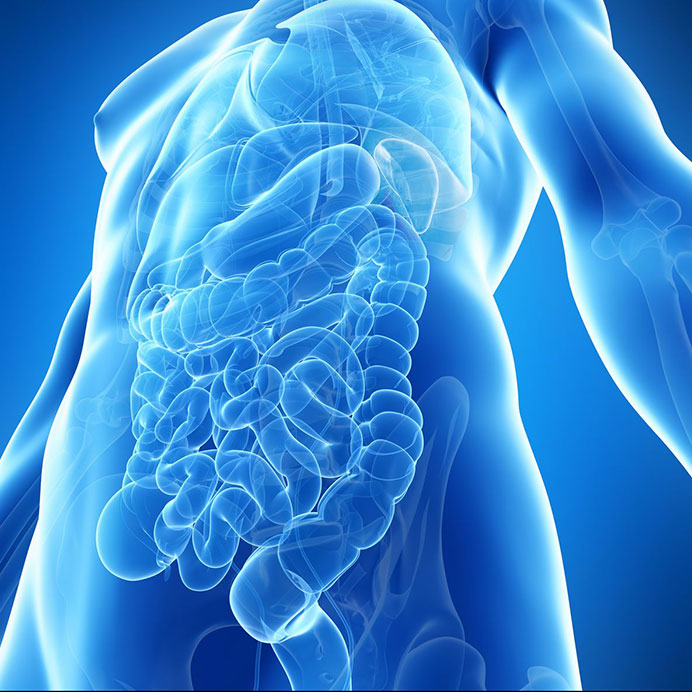Diagnostics
Pelvic Cavity Ultrasound
Diagnosing the
Pelvic Cavity
The pelvic cavity is contiguous with the lower end of the abdominal cavity. It is contained within the bony pelvis and contains the urinary bladder, the pelvic colon, the rectum, as well as numerous arteries, veins, nerves, and muscles. The female pelvic cavity contains the female reproductive organs including the uterus, cervix, vagina, Fallopian tubes, and ovaries. The male pelvic cavity contains the prostate gland and the seminal vesicles.
Pelvic Ultrasound Examination
Transabdominal ultrasound of the pelvic cavity uses high-frequency sound waves to create real-time images of the organs and structures of the pelvic cavity. The examination is performed by passing the ultrasound transducer over the skin of the lower abdominal wall. It takes approximately 30 minutes to perform and requires the patient to be prepped with a full urinary bladder by drinking 4-6 glasses of water about an hour before the examination.

Indications
- Pelvic Mass
- Pelvic Pain
- Uterine Fibroid
- Endometrial Hyperplasia
- Amenorrhea
- Pelvic Inflammatory Disease
- Urinary Obstruction
- Heavy or Frequent Menstruation
- Irregular Menstruation
- Post-Menstrual Bleeding
- Hematuria
Diagnoses
- Appendicitis
- Fibroid Tumors
- Pelvic Inflammatory Disease
- Cysts
- Masses
- Ovarian Torsion
- Endometriosis
- Ectopic Pregnancy
- Bladder Cancer
- Cervical Cancer
CPT Codes
-
76856 – Ultrasound Pelvic, Transabdominal
Common ICD-10 Codes
-
R10.10 – Upper abdominal pain, unspecified
-
R10.30 – Lower abdominal pain, unspecified
-
R10.32 – Left lower quadrant pain
-
N92.5 – Other specified irregular menstruation
-
N92.6 – Irregular menstruation, unspecified
-
R10.13 – Epigastric pain
-
R10.12 -Left upper quadrant pain
-
N92.0 – Excessive and frequent menstruation with regular cycle
-
R19.09 – Other intra-abdominal and pelvic swelling, mass and lump
-
D25.9 – Leiomyoma of uterus, unspecified
-
N13.9 – Obstructive and reflux uropathy, unspecified
-
N95.0 – Postmenopausal bleeding
-
N94.4 – Primary dysmenorrhea
-
N94.5 – Secondary dysmenorrhea
-
N94.6 – Dysmenorrhea, unspecified
-
N91.0 – Primary amenorrhea
-
N91.1 – Secondary amenorrhea
-
N91.2. – Amenorrhea, unspecified
-
R19.03 – Right lower quadrant abdominal swelling, mass and lump
-
R19.04 – Left lower quadrant abdominal swelling, mass and lump
-
N92.4. – Excessive bleeding in the premenopausal period
-
N93.9 – Abnormal uterine and vaginal bleeding, unspecified
-
N94.1 – Dyspareunia
-
N83.20 – Unspecified ovarian cysts
-
N83.29 – Other ovarian cysts
-
E28.2 – Polycystic ovarian syndrome
-
N84.0 – Polyp of corpus uteri
-
N84.8 – Polyp of other parts of female genital tract
-
N84.9 – Polyp of female genital tract, unspecified
-
N89.8 – Other specified noninflammatory disorders of vagina
-
N83.0 – Follicular cyst of ovary
-
N85.2 – Hypertrophy of uterus
-
N95.9 – Unspecified menopausal and perimenopausal disorder
-
R33.9 – Retention of urine, unspecified
-
T83.31XA – Breakdown (mechanical) of intrauterine contraceptive device, initial encounter
-
T83.32XA – Displacement of intrauterine contraceptive device, initial encounter
-
T83.39XA – Other mechanical complication of intrauterine contraceptive device, initial encounter
-
N70.11 – Chronic salpingitis
-
N70.12 – Chronic oophoritis
-
N70.13 – Chronic salpingitis and oophoritis
-
N76.0 – Acute vaginitis
-
N76.1 – Subacute and chronic vaginitis
-
N76.2 – Acute vulvitis
-
N76.3 – Subacute and chronic vulvitis
-
N85.00 – Endometrial hyperplasia, unspecified
-
N89.7 – Hematocolpos
-
N93.8 – Other specified abnormal uterine and vaginal bleeding
-
O00.9 – Ectopic pregnancy, unspecified
-
O07.1 – Delayed or excessive hemorrhage following failed attempted termination of pregnancy
-
R10.814 – Left lower quadrant abdominal tenderness
-
R10.824 – Left lower quadrant rebound abdominal tenderness
-
N80.9 – Endometriosis, unspecified
-
N71.9 – Inflammatory disease of uterus, unspecified
-
N85.4 – Malposition of uterus
© 2022 Texas Sonography Associates | Site by JQ

